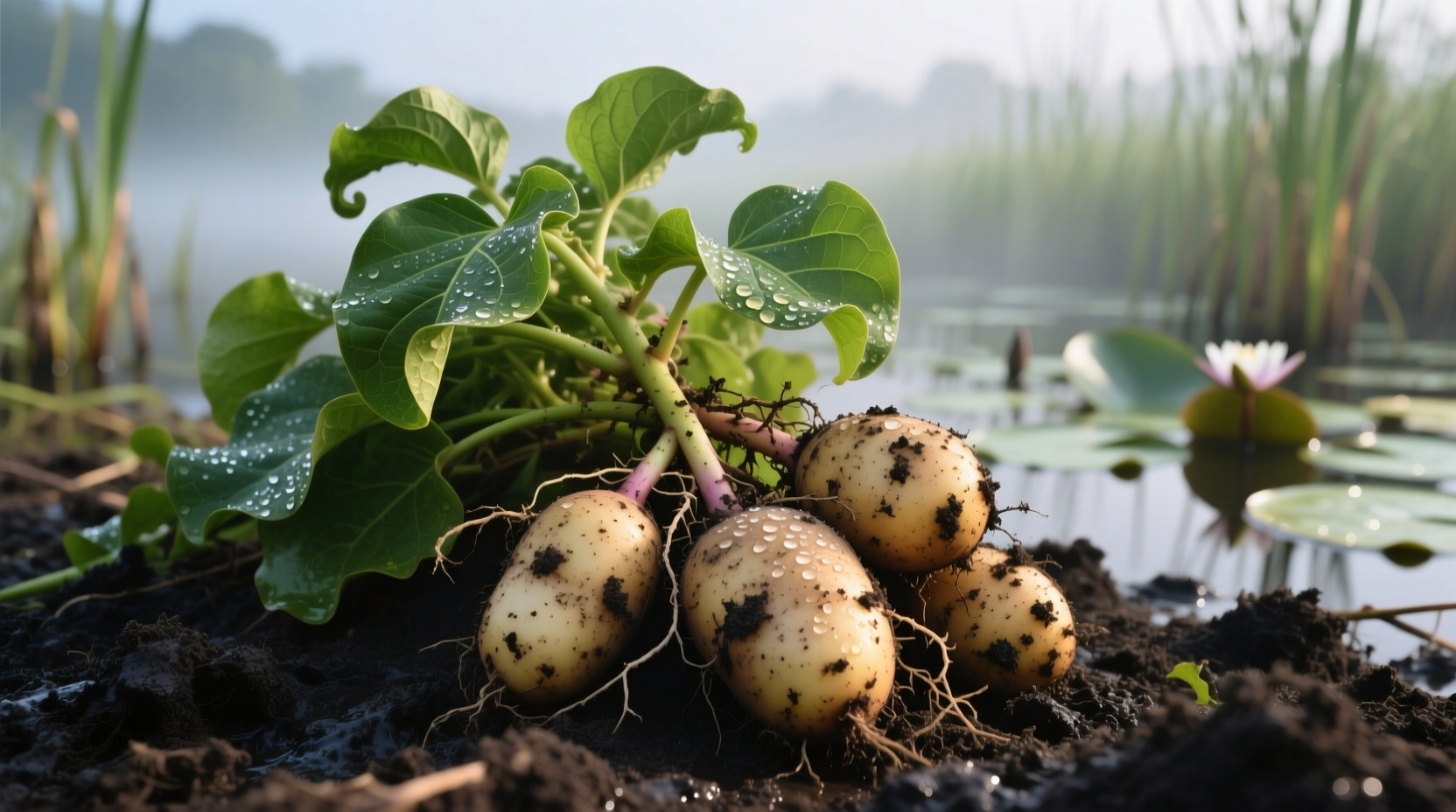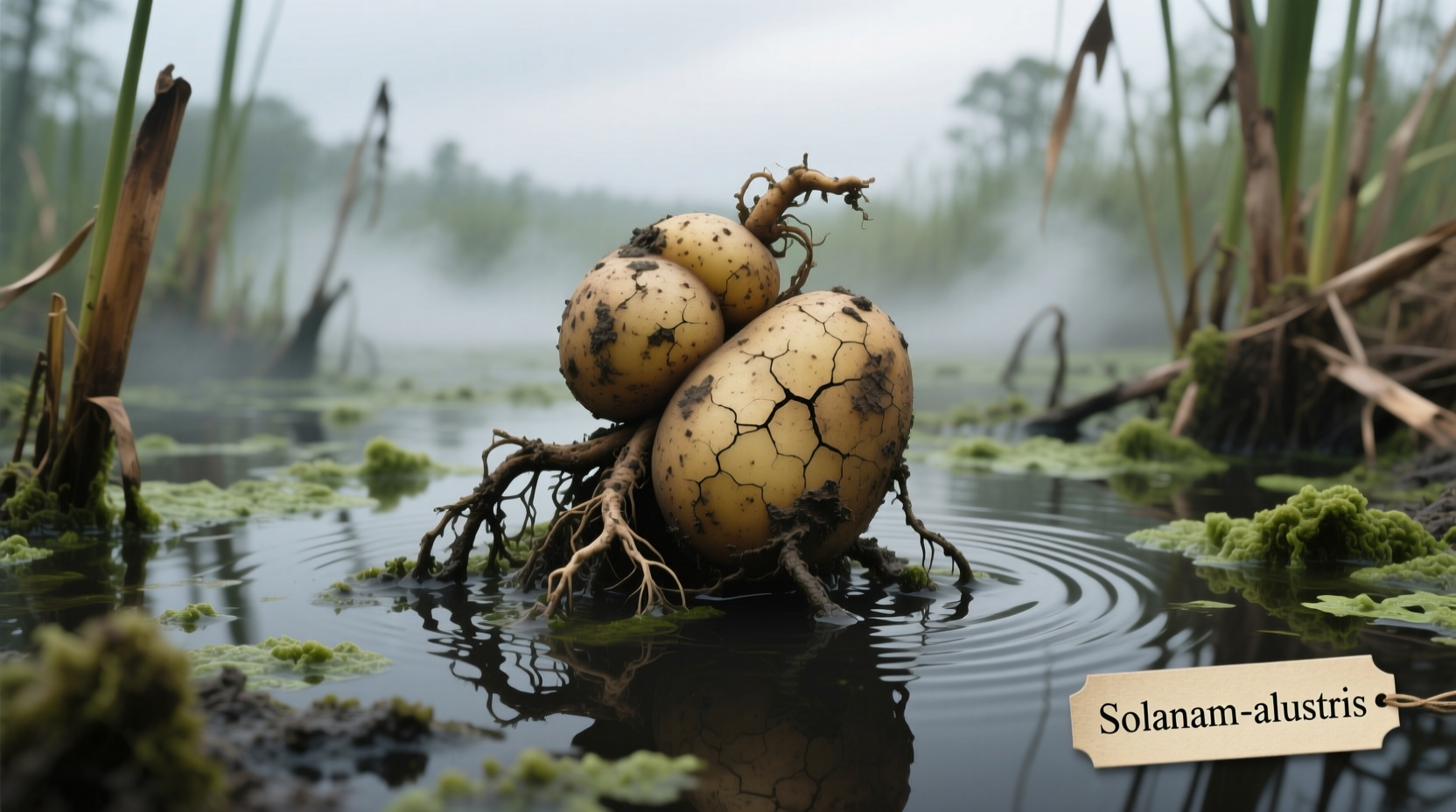What Exactly Is Swamp Potato and Why Should You Care?
If you've encountered this unusual plant in wetlands or heard about it in Caribbean cooking, you're probably wondering: Is swamp potato edible? How does it differ from regular potatoes? And where does it actually grow? Unlike common potatoes (Solanum tuberosum), swamp potato belongs to the Araceae family and has been a dietary staple for indigenous communities throughout the Caribbean and Central America for centuries.
Understanding this versatile crop matters because it represents both a traditional food source and a potential climate-resilient crop for wetland agriculture. With changing weather patterns affecting traditional farming, swamp potato's ability to thrive in waterlogged conditions makes it increasingly relevant for food security discussions.
Identifying Swamp Potato in the Wild
Before considering harvesting swamp potato, proper identification is critical. Mistaking it for toxic look-alikes could have serious consequences. Here's what to look for:
- Leaves: Large, heart-shaped with prominent veins, typically 1-2 feet long
- Stem: Thick, fleshy, and often purplish at the base
- Tubers: Oval to elongated, with brown, scaly skin and white or yellow flesh
- Habitat: Found in marshes, riverbanks, and other consistently moist environments
According to the USDA Natural Resources Conservation Service, swamp potato grows primarily in USDA hardiness zones 8-11, with optimal growth in areas receiving 60-100 inches of annual rainfall. The plant cannot survive prolonged frost but thrives in tropical and subtropical wetlands where traditional potatoes would rot.
| Feature | Swamp Potato (Xanthosoma) | True Potato (Solanum) | Potentially Toxic Look-alike |
|---|---|---|---|
| Family | Araceae | Solanaceae | Araceae (some species) |
| Leaves | Heart-shaped, prominent veins | Compound leaves, fern-like | Similar heart shape but different vein pattern |
| Tuber Skin | Brown, scaly | Thin, various colors | Often smooth, different coloration |
| Toxicity When Raw | Mild (calcium oxalate crystals) | High (solanine) | Severe (some species) |
Safety First: Preparing Swamp Potato Properly
Raw swamp potato contains calcium oxalate crystals that can cause mouth and throat irritation. However, proper preparation eliminates this risk completely. The University of Florida's Institute of Food and Agricultural Sciences confirms that thorough cooking neutralizes these compounds, making the tuber completely safe to eat.
Follow these preparation steps for safe consumption:
- Wear gloves when handling raw tubers to prevent skin irritation
- Peel thoroughly, removing all brown skin and any dark spots
- Cook for at least 20-30 minutes in boiling water
- Discard cooking water before using in recipes
Unlike true potatoes that can be eaten raw (though not recommended), swamp potato must be cooked properly. The National Center for Home Food Preservation notes that traditional Caribbean preparation methods often involve boiling followed by frying or mashing, which ensures complete neutralization of any irritants.
Historical Journey of Swamp Potato
Swamp potato's story spans continents and centuries. Archaeological evidence from the Smithsonian Tropical Research Institute shows that indigenous peoples in Panama were cultivating Xanthosoma species as early as 5000 BCE. When European colonizers arrived in the Caribbean, they documented native populations relying on this crop as a dietary staple.
5000 BCE: Earliest archaeological evidence of cultivation in Panama
1492-1500s: Documented as staple food by Spanish colonizers in Caribbean islands
1700s: Transported to West Africa via slave trade, becoming important crop
1800s: Introduced to Southeast Asia by European traders
1960s: Scientific studies begin documenting nutritional properties
Present: Gaining attention as climate-resilient crop for wetland agriculture
Dr. Sarah Creamer of the USDA Agricultural Research Service explains: "Swamp potato represents one of the few traditional crops that actually benefits from increased rainfall patterns associated with climate change. While many staple crops suffer in waterlogged conditions, Xanthosoma thrives, making it increasingly important for food security planning." 
Practical Uses in Modern Cooking
Swamp potato's culinary versatility explains its enduring popularity. With a texture similar to yams but a more neutral flavor than taro, it serves as an excellent thickener and base for many traditional dishes:
- Caribbean fufu: Boiled and mashed into a smooth dough, often served with savory stews
- Puerto Rican alcapurrias: Grated and used as the outer layer for fried meat-filled fritters
- Dominican mangu: Served mashed as a breakfast staple with fried eggs and salami
- Thickening agent: Used in soups and stews where cornstarch would break down
Nutritionally, swamp potato offers advantages over regular potatoes. According to USDA FoodData Central, it contains 25% more dietary fiber and higher levels of vitamin C and potassium. However, it has slightly fewer carbohydrates, making it a good option for those monitoring blood sugar levels.
Growing Swamp Potato in Your Garden
Interested in cultivating this resilient crop? Swamp potato adapts well to container gardening for those without access to wetlands. The Agricultural Extension Service at Louisiana State University recommends these growing conditions:
- Soil: Rich, moist but well-draining (can tolerate standing water)
- Sunlight: Partial shade to full sun
- Planting: Set tuber sections with at least one "eye" 2-4 inches deep
- Water: Keep consistently moist; thrives with regular watering
- Harvest: 9-12 months after planting, when leaves begin yellowing
Important boundary condition: Never forage swamp potato in areas with potential water contamination. The University of Georgia's Center for Urban Agriculture warns that plants grown in polluted waters can absorb heavy metals and other contaminants, making them unsafe for consumption regardless of proper cooking.
Swamp Potato vs. Other Root Vegetables: Making the Right Choice
When deciding between swamp potato and similar root vegetables, consider these factors:
- For wetland gardening: Swamp potato outperforms true potatoes which rot in waterlogged soil
- For gluten-free baking: Its neutral flavor makes it better than taro for some applications
- For blood sugar management: Lower glycemic index than white potatoes
- For nutrient density: Higher in fiber and potassium than sweet potatoes
Chef Maya Gonzalez, who has documented traditional uses throughout Latin America, notes: "In coastal communities from Cuba to Colombia, swamp potato remains the preferred starch when flooding makes traditional agriculture impossible. Its resilience isn't just historical—it's actively saving harvests today as weather patterns become more unpredictable."
Common Questions About Swamp Potato
Let's address some frequent concerns about this versatile root vegetable:
- Can you eat swamp potato raw? No, raw swamp potato contains calcium oxalate crystals that cause irritation and must be thoroughly cooked.
- How long does swamp potato last in storage? Properly cured tubers can last 2-3 weeks in a cool, dark place with good ventilation.
- Is swamp potato the same as taro? No, though related, they belong to different genera (Xanthosoma vs. Colocasia) with distinct flavors and textures.
- Can swamp potato be grown outside tropical regions? Yes, as a seasonal crop in warmer temperate zones or in containers brought indoors during cold months.
- Does swamp potato cause allergic reactions? Rarely, though those sensitive to other Araceae family plants may experience mild reactions.











 浙公网安备
33010002000092号
浙公网安备
33010002000092号 浙B2-20120091-4
浙B2-20120091-4